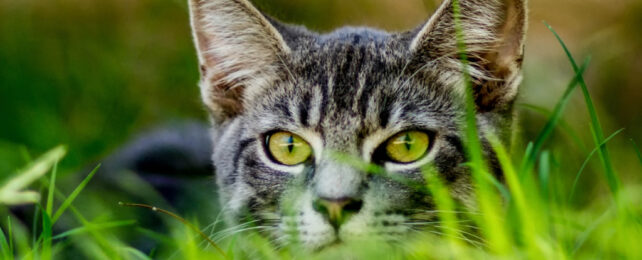Our favorite feline friends are fairly fussy, but not when it comes to their diet. According to a new global study of what animal species cats devour, free-roaming domestic cats, including pets and feral animals, are extreme generalists that eat whatever they can sink their claws into.
While many cat owners – especially those in Australia – might know that letting their pets roam outside puts wildlife at risk, the numbers are truly staggering.
An estimated 1.5 billion native animals are killed by domestic cats each year in Australia alone. But the collective toll of their escapades, globally, is perhaps far greater than anybody realized.
According to the new analysis from Christopher Lepczyk, an Auburn University ecologist, and colleagues, cats (Felis catus) are cunning carnivores that eat more than 2,000 different species worldwide. Of those prey, 347 are listed as species of conservation concern and some are already classified as extinct.
In places like Australia and other island nations, it is well documented that free-roaming cats take the lead in animal extinctions. Elsewhere, the extent of their predatory habits is less well known.
So Lepczyk and his team tallied up all the records they could find of animal species consumed by cats, worldwide. Their analysis includes hundreds of books, scientific papers, and reports, some of which date back to the early 1900s.
Most of the 2,084 species killed or scavenged by cats were birds (981 species), reptiles (463 species) and mammals (431 species). Mice and rats were regulars on the feline menu, but cats were also found to have scavenged upon emus, green sea turtles, cattle, and bullfrogs.
"We don't really know of any other mammal that eats this many different species," Lepczyk told journalist Jack Tamisiea for Scientific American. "It's almost like an indiscriminate eater; they're eating whatever's available."
From the available evidence, which only featured documented instances of cat predation and included no anecdotal or secondhand reports, cats were found to consume almost 9 percent of all known bird species and more than 6 percent of known mammals.
Of the 347 species of conservation concern that cats preyed upon, one-quarter were found on islands and included the near-threatened western quoll, which is confined to the southwest corner of Western Australia, and Newell's shearwater, a critically endangered Hawaiian seabird.
As alarming as the figures are, the analysis likely underestimates the true range of cat predation, the researchers warn. That's because the included studies often struggled to clearly identify prey species and categorized lots of species as 'unknown'.
Cats are also opportunistic predators that hunt and kill animals but don't necessarily eat their catch, so those slain prey won't turn up in cat scats.
What's more, only a small fraction of insects are known to science, and insect remains are much harder to identify in cats' stomachs and scats than larger feathers or mammal bones.
Many insects haven't been evaluated by the International Union for Conservation of Nature (IUCN) either, so we don't know how threatened, endangered, or abundant they may be.
Plus, most studies of cat diets have been conducted in Australia and North America, leaving tropical regions and biodiversity hotspots in Asia, Africa, and South America largely unaccounted for.
"The lack of sampling in many of the most biodiverse locations on the planet suggests that we are likely missing critical locations for the evaluation of cat predation and scavenging," Lepczyk and colleagues conclude.
Attempts to control invasive cats over large areas have so far failed, but researchers are investigating new strategies. Meanwhile cat owners are urged to keep their pets indoors, for the cat's own safety as well for the sake of surrounding wildlife.
The study has been published in Nature Communications.
